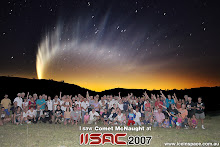
The myth still persists in some places that only initiated persons can paint genuine Aboriginal
art. As initiation has more to do with religon that culture; this is not true. Many non-initiated people have an excellent knowledge of their culture, in some cases this knowledge has been passed down to them through several generations. I will now explain a little about
religious art and how this may affect your purchasing decisions. After reaching puberty
Aborigines went through an initiation process. As this is really a religious act, it is only tribes that still retain a fair amount of religious knowledge where this still happens. How does this affect art? Like most other religions you reach a higher "rank" as you obtain more knowlege & power. The most sacred of religious art is only created by older persons who have completed several stages of initiation and is not allowed to be seen by anyone except other initiated persons and very little is in private hands.
art. As initiation has more to do with religon that culture; this is not true. Many non-initiated people have an excellent knowledge of their culture, in some cases this knowledge has been passed down to them through several generations. I will now explain a little about
religious art and how this may affect your purchasing decisions. After reaching puberty
Aborigines went through an initiation process. As this is really a religious act, it is only tribes that still retain a fair amount of religious knowledge where this still happens. How does this affect art? Like most other religions you reach a higher "rank" as you obtain more knowlege & power. The most sacred of religious art is only created by older persons who have completed several stages of initiation and is not allowed to be seen by anyone except other initiated persons and very little is in private hands.
The next level of religious art again is only painted by highly initiated persons, but may be
viewed by other, but with tight restrictions. It should only be shared with persons who treat it
with respect. Prior to 1980 some art of this level reached the market (sometimes by accident) & is probably the best investment Aborginal art you can buy. As many aboriginal persons consider
selling such art for money as offensive as 'flag burning' in recent years little has been
released onto the market. The fourth level of religious art is still only produced by 'persons who have the right', but the most sacred & magical pieces are not included (or masked over in some way) and often the artist, while still being initated has a lower level of knowledge and does not know all the details of the ancestral beings that older person does, so can not include these in their painting anyway. This is the level of (religious) art you are most likely to buy. What I call
the "third level" is a little below the second. It can be painted only by very knowledgeable
elders; but the most sacred elements are left out or concealed. This art is still considered to
be 'sacred' & there have been some successful lawsuits because of unauthorised persons
desecrating it by putting the designs on tea-towels etc. (And breaking copyright laws of
course!) This type of art can be very expensive, so do your research if you are especially
interested in purchasing a painting of this type as a long-term investment.
Also remember no one can be a true prophet of how the future market will price works. eg. as artists' eyesight deteriorate with age the quality of their work may go down. This could make some of their works worth less; on the other hand the fact that it is one of the last paintings they produced could send its value sky-rocketing. If you wish to buy work by a particular artist as an investment piece, please make sure that the actual artist painted the work. In some cases other family members may have done the actual work, this could have a major bearing on its future worth. (As families & individuals 'own' stories under traditional law - the story owner can sometimes be named as the artist when in fact they did none of the actual painting.) Please note that in most cases the artist retains copyright of his work and therefore has the right to produce & sell copies of your 'famous' piece. You can offer to buy 'copyright' with the painting, but be
prepared to pay for the priviledge. It is good to remember that Aboriginal Religious art can be offensive to certain people (consider the first three of the 10 Commandments) & therefore should be avoided by some people; or you may need to consider where you hang it.
prepared to pay for the priviledge. It is good to remember that Aboriginal Religious art can be offensive to certain people (consider the first three of the 10 Commandments) & therefore should be avoided by some people; or you may need to consider where you hang it.
Other people may wish to purchase it because of 'magical properties' they believe it has. Much
of our art is secular or relates 'dreaming stories' that teach everyone good morals.
This is the first in a series that deals with "Choosing Investment Aboriginal Art". Please stay
tuned for more exciting episodes! To learn more about the painting & how it pertains to
religious art; please go to http://www.aboriginalarttreasures.com/awards.php & http://www.aboriginalarttreasures.com/prints.php to read all about why the artist painted it.

1 comment:
I like to collect painting and always attempt to collect some different types of sculpture paintings. Can you give some information on Aboriginal Art!!
Post a Comment